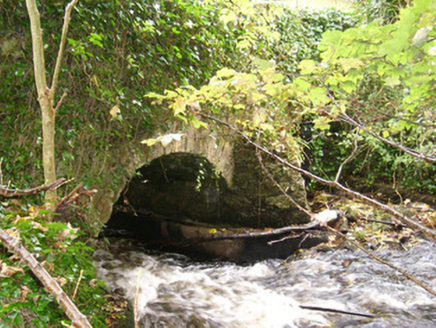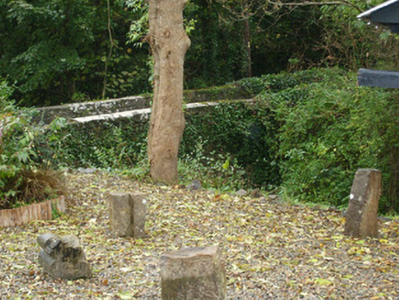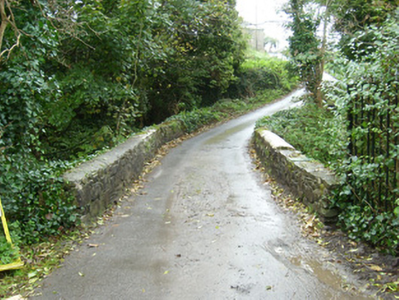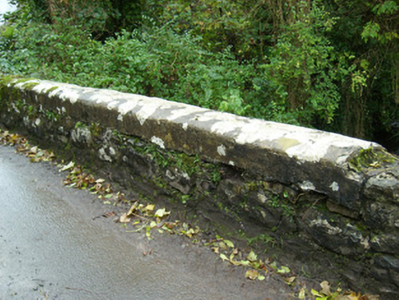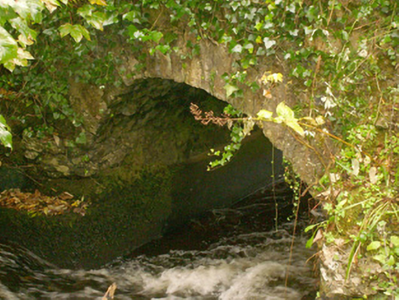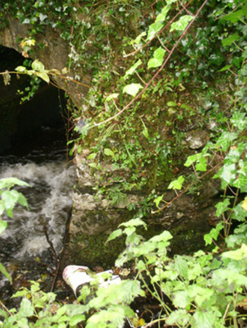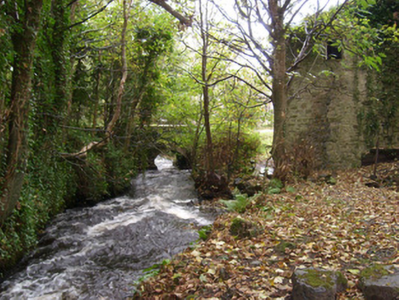Survey Data
Reg No
40852005
Rating
Regional
Categories of Special Interest
Architectural, Technical
Original Use
Bridge
In Use As
Bridge
Date
1600 - 1750
Coordinates
186965, 362218
Date Recorded
26/10/2007
Date Updated
--/--/--
Description
Two-arch road bridge carrying small road over the Abbey River, built c. 1675. Two segmental-headed arches having roughly dressed and squared stone voussoirs. Rubble stone V-profile cutwater with corbelled head to central pier on upstream elevation (east). Rubble stone construction to spandrels, abutments, barrels and central pier. Rubble stone construction to parapets walls with stone coping over having cement repairs in places. Located to the countryside to the north-west of Ballyshannon, and immediately to the south of Assaroe Mill complex (40852002) and to the south-west of the remains of Assaroe Cistercian Abbey (DG107-044001-).
Appraisal
This simple two-arch road bridge retains its early form and character. The form of this bridge: having relatively wide central pier with V-shaped cutwater, the rubble stone masonry used in the construction, and the shape of the elliptical arches all suggest that this bridge is of considerable antiquity and probably dates to before 1700 and possibly considerably earlier. The location of this bridge immediately to the south-west of the remains of Assaroe Cistercian Abbey (some of the earliest bridges in Ireland are located close to medieval abbey complexes, particularly Cistercian foundations) suggests that this is a very ancient river crossing and it is possible that the present bridge may contain to fabric of an earlier bridge(s). The noted poet and author Hugh Allingham (1824 or 1828 - 1889), a native of Ballyshannon, writing in 1879 describes this ‘rustic bridge of two arches’ and surmised that it was one of the earliest stone bridges in Ireland (in ‘Ballyshannon: Its History and Antiquities: With Some Account of the Surrounding Neighbourhood’). Located in a picturesque setting to the north-west of Ballyshannon, this appealing bridge represents an important element of the built heritage of the local area. The fact that it is still in operation after some three hundred years of use is testament to the quality of its original construction.


